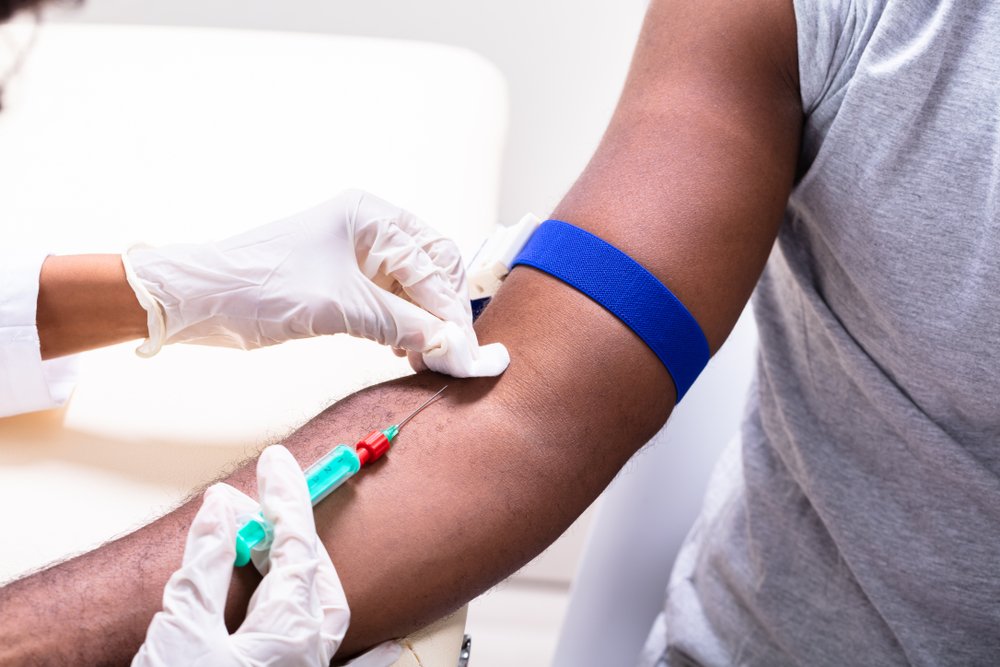For people with cancer, early detection can mean the difference between life and death. Detecting cancer in its earliest stages — before it has grown aggressively or spread to lymph nodes or other parts of the body — gives people the best chance of survival. The more advanced the cancer when it’s diagnosed, the lower the odds it can be conquered with surgery or therapies.
While scientists are constantly seeking better treatments for cancer, the real holy grail among oncology researchers has been developing an early-warning system. Routine screenings such as colonoscopies, Pap smears, or mammograms have been highly effective in detecting certain cancers earlier than if people waited until they had noticeable symptoms. But even these tools can’t spot the earliest signs of cancer. Also, they’re not available for every type of cancer.

In the genomics field, scientists have begun focusing on telltale cancer markers found in the blood. For example, tiny DNA fragments known as ctDNA are shed by tumors and circulate in the bloodstream. Many companies and research institutions have now developed tests to detect these fragments from a simple blood draw. They are used primarily to monitor existing cancers — offering important signals about how a tumor is responding to treatment or whether tumors have specific genetic variants that make them good targets for certain therapies — but they can also pick up the presence of cancer in people who have not yet been diagnosed.
Unfortunately, ctDNA fragments generally cannot be used to locate the source of the cancer; since they travel in the bloodstream, they could have originated almost anywhere. But now scientists are exploring another layer of information carried by these DNA fragments. Results from a new study indicate this may be the missing puzzle piece that finally allows for early cancer detection with the ability to map its origin.
In our bodies, DNA is the blueprint that guides everything — from building our organs to sending out a key hormone at a critical moment. But our DNA carries a second layer of code on top of it, known as methylation. This code regulates which parts of our DNA get turned into active marching orders by RNA and proteins at any given time, ensuring that our complex systems get only the information they need when they need it.

At the recent annual meeting of the American Society of Human Genetics, Nicholas Cheng from the Ontario Institute for Cancer Research presented data from a study that aimed to detect cancer by mining methylation data from DNA fragments found in blood samples. He and his team used more than 300 blood samples collected between 2009 and 2017 as part of Canadian Partnership for Tomorrow’s Health Project, a large-scale health project that follows hundreds of thousands of participants over several years.
The team focused on people who were healthy at enrollment but were later diagnosed with breast, prostate, or pancreatic cancer at some point during the study. They used blood samples collected prior to diagnosis — in some cases, many years prior — and applied machine learning tools to look for methylation patterns indicative of cancer. They also analyzed control samples from study participants who never had cancer to ensure that any findings were specific to the development of cancer.
Cheng and his colleagues found that their approach not only identified the presence of cancer, but also pinpointed its source using key methylation signatures. Best of all, the researchers found this worked up to seven years prior to diagnosis by conventional techniques. “Across cancer genomes there [tend] to be genome-wide disruptions in methylation patterns,” Cheng said in his conference presentation. “We’re able to identify discriminatory signatures indicative of cancers.”
Cheng believes that eventually this kind of tool could be validated sufficiently to be used alongside standard screening protocols in clinical practice; it could be useful with cancers for which there are good screening methods as well as cancers for which no screening exists, such as pancreatic cancer. While further study is needed, it’s a remarkably promising step toward earlier detection of cancer.

















